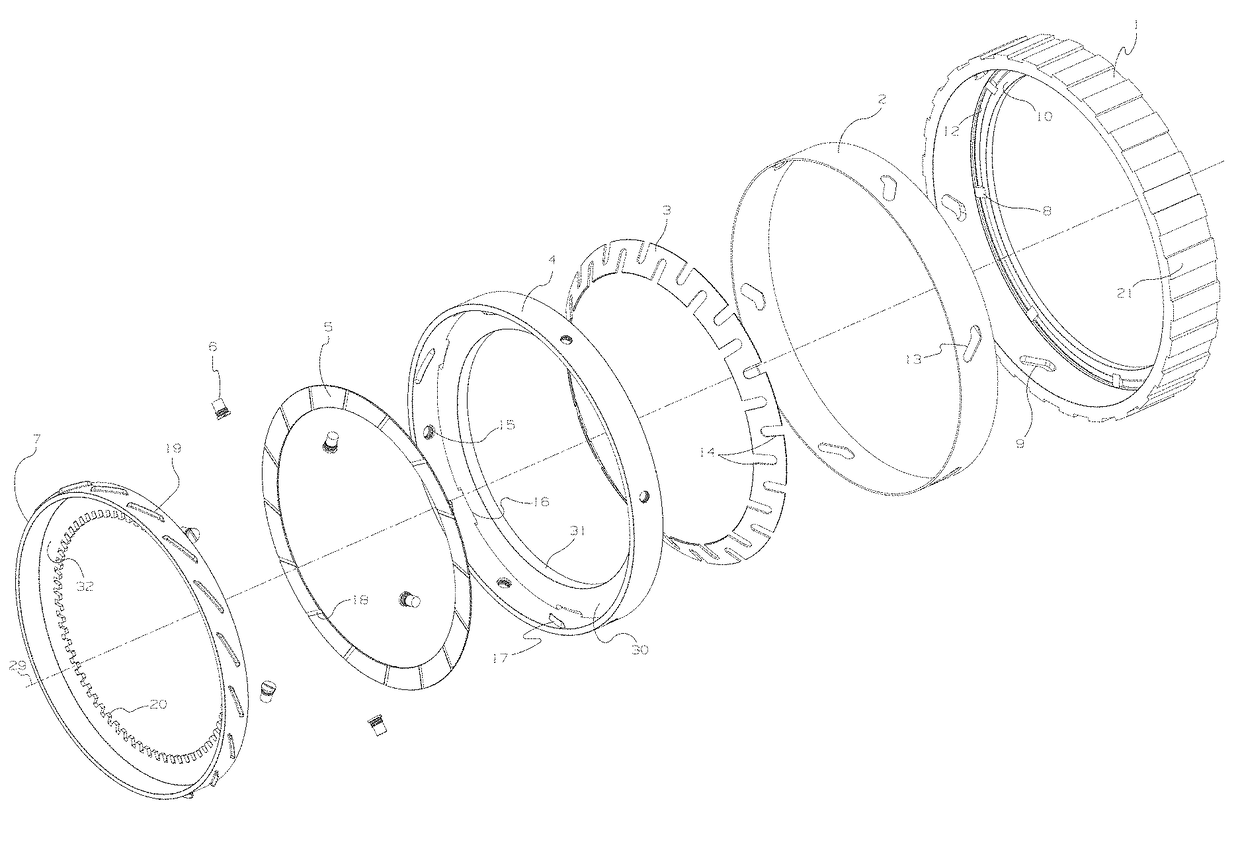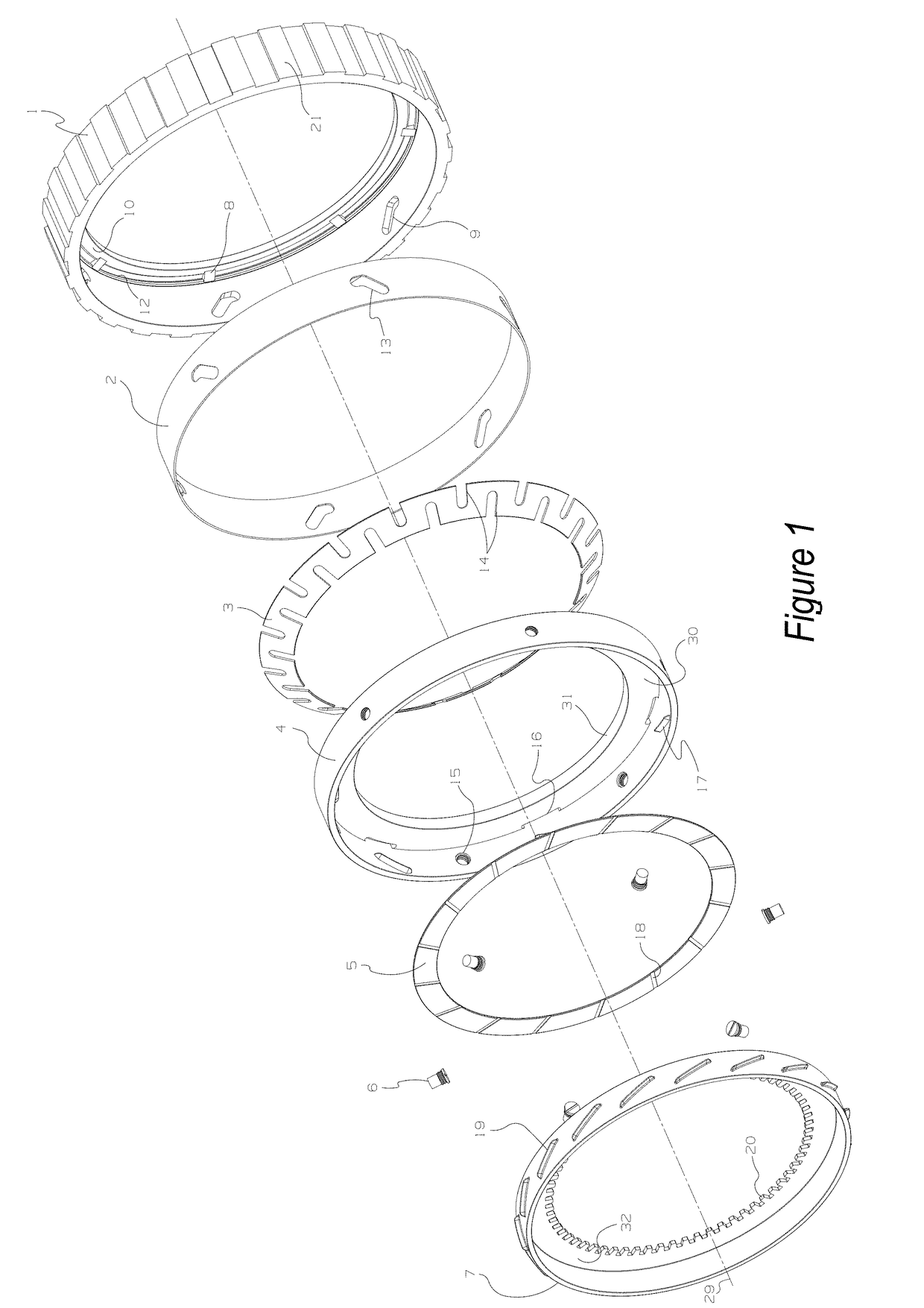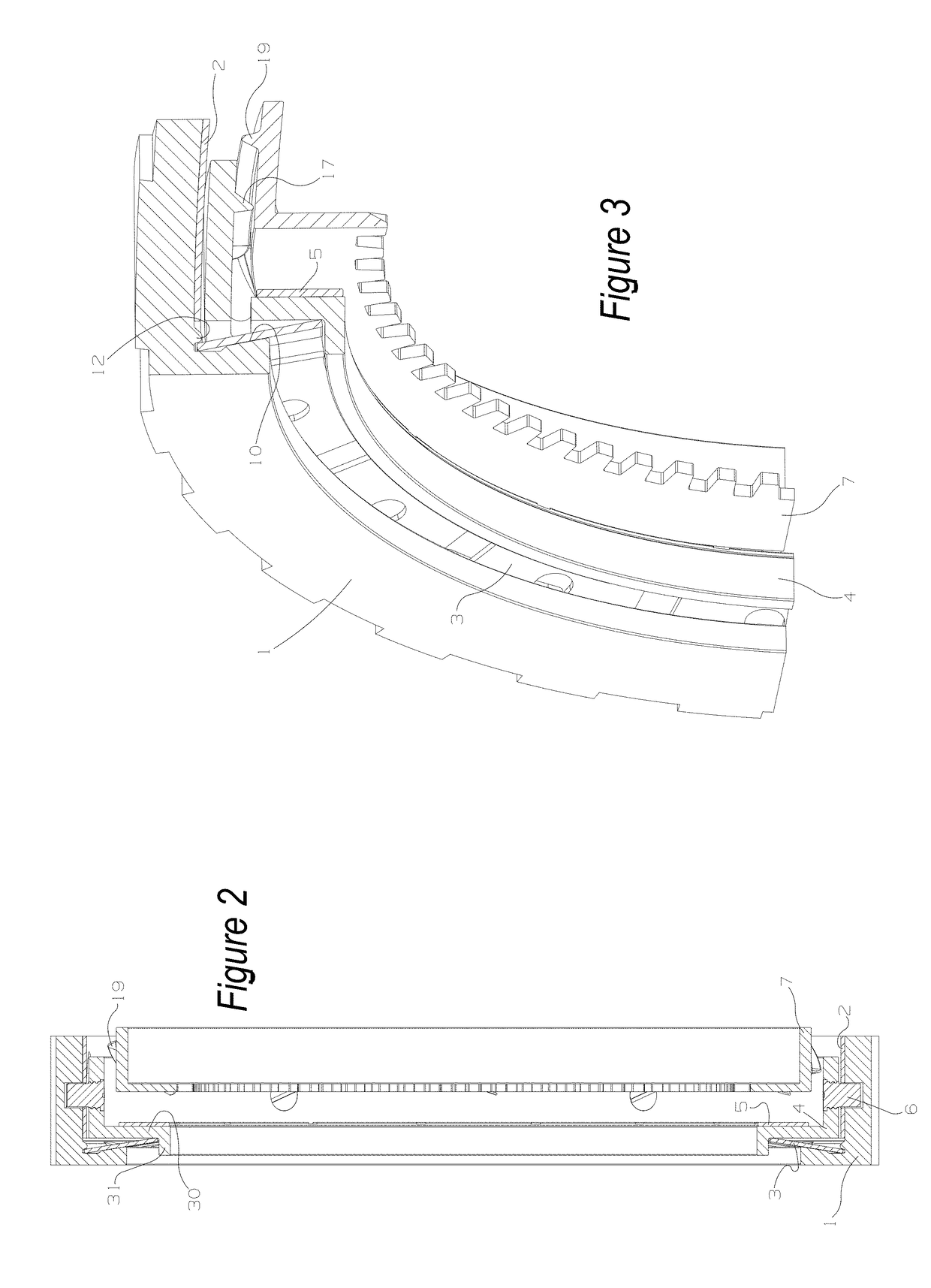Mechanically disengaging overrunning clutch
a clutch and mechanical technology, applied in the field of one-way clutches, can solve the problems of ratcheting of the actuating plate, actuation provided by an electric motor, etc., and achieve the effects of reducing relative speed, avoiding abrupt or shock impact, and facilitating engagement and disengagemen
- Summary
- Abstract
- Description
- Claims
- Application Information
AI Technical Summary
Benefits of technology
Problems solved by technology
Method used
Image
Examples
Embodiment Construction
[0025]A one-way clutch for a motor vehicle is provided. The one-way clutch includes a cam plate with outer splines and a counter plate with inner splines. The one-way clutch also includes an actuation plate between the cam plate and the counter plate, the actuation plate having a predetermined and limited amount of sliding engagement with the cam plate. An engagement mechanism that is operable to provide selective engagement between the actuation plate and the counter plate can also be present. Finally, a biasing member between the cam plate and the counter plate is present and the biasing member is operable to expand and contract in a direction that is parallel to a central axis of the cam plate. The biasing member also moves the actuation plate along the central axis between an overrun position with the counter plate and a disengaged position with the counter plate.
[0026]The cam plate can have a side wall with an inner race and the side wall can have a plurality of cam track groov...
PUM
 Login to View More
Login to View More Abstract
Description
Claims
Application Information
 Login to View More
Login to View More - R&D Engineer
- R&D Manager
- IP Professional
- Industry Leading Data Capabilities
- Powerful AI technology
- Patent DNA Extraction
Browse by: Latest US Patents, China's latest patents, Technical Efficacy Thesaurus, Application Domain, Technology Topic, Popular Technical Reports.
© 2024 PatSnap. All rights reserved.Legal|Privacy policy|Modern Slavery Act Transparency Statement|Sitemap|About US| Contact US: help@patsnap.com










